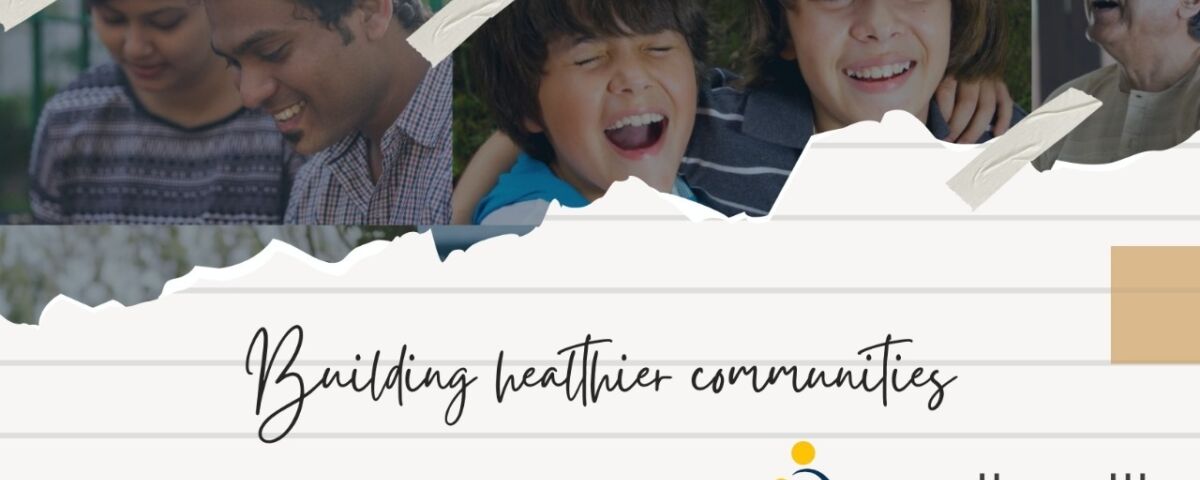





Keep this story going! Share below!
Saathealth is a social enterprise addressing the needs of India’s “missing middle” — families left out of both government schemes and private healthcare. Through its digital-first marketplace, it provides affordable health products, financial resilience tools, and localised infotainment-based awareness. By bridging gaps in access, affordability, and awareness, Saathealth advances UN SDGs on health, gender equality, reduced inequalities, and partnerships.
Saathealth’s core innovation is its digital-first marketplace explicitly designed for India’s “missing middle,” the 500–600 million people too rich to qualify for government health schemes yet too poor to afford private healthcare. This population is highly vulnerable to health shocks, with many families pushed into poverty due to out-of-pocket medical expenses. Saathealth’s platform directly responds to this challenge by offering affordable health and financial resilience products, alongside engaging infotainment-based awareness content tailored to local languages and cultural contexts.
The innovation involves integrating awareness, access, and affordability into one ecosystem. Traditional models often stopped at awareness, leaving families unable to act on health information. Saathealth bridges this gap by combining scientifically validated preventive health content with tools like HospiCash, a financial product that cushions families against the economic burden of hospitalisation. The platform also includes risk assessment tools and women’s health initiatives, such as anaemia education chatbots, designed to break cycles of malnutrition across generations.
By using smartphones; devices already widely adopted in low-income households for entertainment — Saathealth delivers health education through infotainment. This approach not only captures attention but also ensures lasting engagement. Families can watch videos, take quizzes, and access products all in one space. The model extends beyond digital: through partnerships with NGOs and community entrepreneurs, Saathealth strengthens last-mile delivery and creates dignified livelihood opportunities. It directly contributes to UN SDGs on good health and well-being(SDG3), gender equality(SDG5), reduced inequalities(SDG10), and partnerships for sustainable development goals (SDG17).

The inspiration for Saathealth’s innovation came from years of working closely with underserved populations and realising that information alone could not solve their challenges. Co-founder Aditi Hazra Ganju explained that she and her co-founder, Akash, had spent over 25 years in healthcare, from pharmaceutical research to designing digital health solutions for low- and middle-income groups. Through this experience, they saw firsthand that people often knew what they needed to do for their health. Still, awareness did not translate into action without access to affordable products and services. As Aditi put it, “Even if people know what they need to do, without access and the ability to pay, solutions remain incomplete.”
This realisation became the turning point in shaping Saathealth into more than just a health education platform. The team recognised that India’s “missing middle” — families too rich for government schemes and poor for private insurance — faced unique vulnerabilities. High out-of-pocket expenses, lack of financial resilience, and limited preventive care pushed many into cycles of debt and poverty. Addressing this gap became a personal mission for the founders.
The COVID-19 pandemic further reinforced their conviction. Communities became more aware of their health risks, while smartphone penetration grew rapidly. Families were already using devices for entertainment, and Saathealth saw an opportunity to shift that usage toward health and financial literacy. As Aditi reflected, “COVID was a turning point. If people could use smartphones for entertainment, why not for health and financial services too?” This belief inspired the development of infotainment-based health education integrated with affordable resilience products — a model designed to create lasting impact.
The overall impact of Saathealth’s innovation can be seen both in immediate behavior change and in long-term resilience for underserved communities. In the short term, families have gained access to affordable health and financial products, paired with localized infotainment-based education that makes health knowledge actionable. One of the earliest successes was Saathealth’s children’s health and nutrition app, launched in the slums of Mumbai and East Delhi. By gamifying nutrition education and offering redeemable incentives at local kirana stores, the program achieved a 70% increase in protein intake and 80% of families reported positive changes in their diets. These results demonstrate how awareness, when combined with incentives and affordability, can directly improve health outcomes.
The long-term effects are equally powerful. Saathealth’s financial resilience products, like HospiCash, protect families from catastrophic health expenses that would otherwise push them into debt. A striking example comes from Nalasopara, near Mumbai, where a single mother described how HospiCash gave her peace of mind that hospitalization would not strip her children of their only income source. By also enrolling in Saathealth’s anemia program, she and her daughters are breaking the intergenerational cycle of malnutrition. As Aditi noted, “This breaks the cycle of nutritional anemia going into the next generation.”
Evidence of impact is also reflected in scale. Surveys with more than 20,000 families highlighted the urgent need Saathealth is addressing, and partnerships with organisations like Grameen Foundation and Healing Fields have extended reach into new communities. In both the short and long term, Saathealth’s model has demonstrated that integrating awareness, access, and affordability can not only improve individual health outcomes but also build systemic resilience across generations.
Saathealth’s innovation benefits the business by turning social challenges into opportunities for sustainable growth. Because the enterprise built a digital-first marketplace for affordable health and financial resilience products, it has been able to tap into the vast, underserved market of India’s missing middle—nearly 600 million people who were previously invisible to traditional healthcare and insurance providers. By reaching this group, Saathealth not only fills a critical social gap but also opens up an entirely new market that drives consistent revenue growth. Affordable products such as HospiCash become profitable when sold at scale, making inclusivity the driver of financial sustainability.
Because the business extended beyond awareness into value-added services for enterprises, new revenue streams were created that reinforce the company’s mission. Saathealth now delivers longitudinal consumer engagement for large corporates, curated well-being programs for blue-collar employers, and consumer insight research that informs product design in both health and finance. These service offerings have opened new markets and investment opportunities, strengthening partnerships with companies and organizations that share its commitment to impact.
Because Saathealth chose to operate as a for-profit social enterprise with a lean team of 10–15 employees, it remains agile and efficient. Strategic collaborations with partners like Grameen Foundation and Healing Fields allow the company to extend its reach without heavy operational overhead. This structure improves retention, keeps employee roles meaningful, and positions Saathealth as an attractive collaborator for future investment. In effect, the innovation ensures that business growth and social impact reinforce one another, proving that profitability and purpose can thrive side by side.
Saathealth’s innovation benefits society by directly addressing the vulnerabilities of India’s “missing middle,” a population often excluded from both public and private health systems. By combining affordable health products, financial resilience tools, and localized infotainment-based education, Saathealth equips families with the means to protect themselves against health and financial shocks. In the short term, this prevents households from falling into poverty due to hospitalization. In the long term, it builds resilience across generations by improving preventive health practices, nutrition awareness, and financial literacy.
The societal impact extends beyond individual families to entire communities. By integrating health education with access to affordable services, Saathealth fosters behavior change at scale. For example, digital campaigns on maternal health and childhood immunization have reached thousands of households, encouraging timely vaccinations and healthier daily practices. This blend of infotainment and accessibility ensures people not only learn but also act, reducing health inequalities and creating stronger, more informed communities.
Saathealth’s digital-first model also generates environmental benefits. Families can access education, health tools, and financial products directly through their smartphones, reducing the need for resource-intensive awareness drives or repeated hospital visits. By leveraging technology to deliver services efficiently, Saathealth addresses urgent social needs while minimizing environmental impact — demonstrating that innovation in healthcare can be both socially transformative and sustainable for the planet.
Get stories of positive business innovations from around the world delivered right to your inbox.

Saathealth is a social enterprise dedicated to serving India’s missing middle, the families excluded from both government healthcare schemes and private insurance. Through a digital-first marketplace, Saathealth distributes affordable health products, financial resilience tools, and localized infotainment-based awareness content. By combining health access with financial literacy, the organization empowers underserved communities to build healthier and more secure futures.